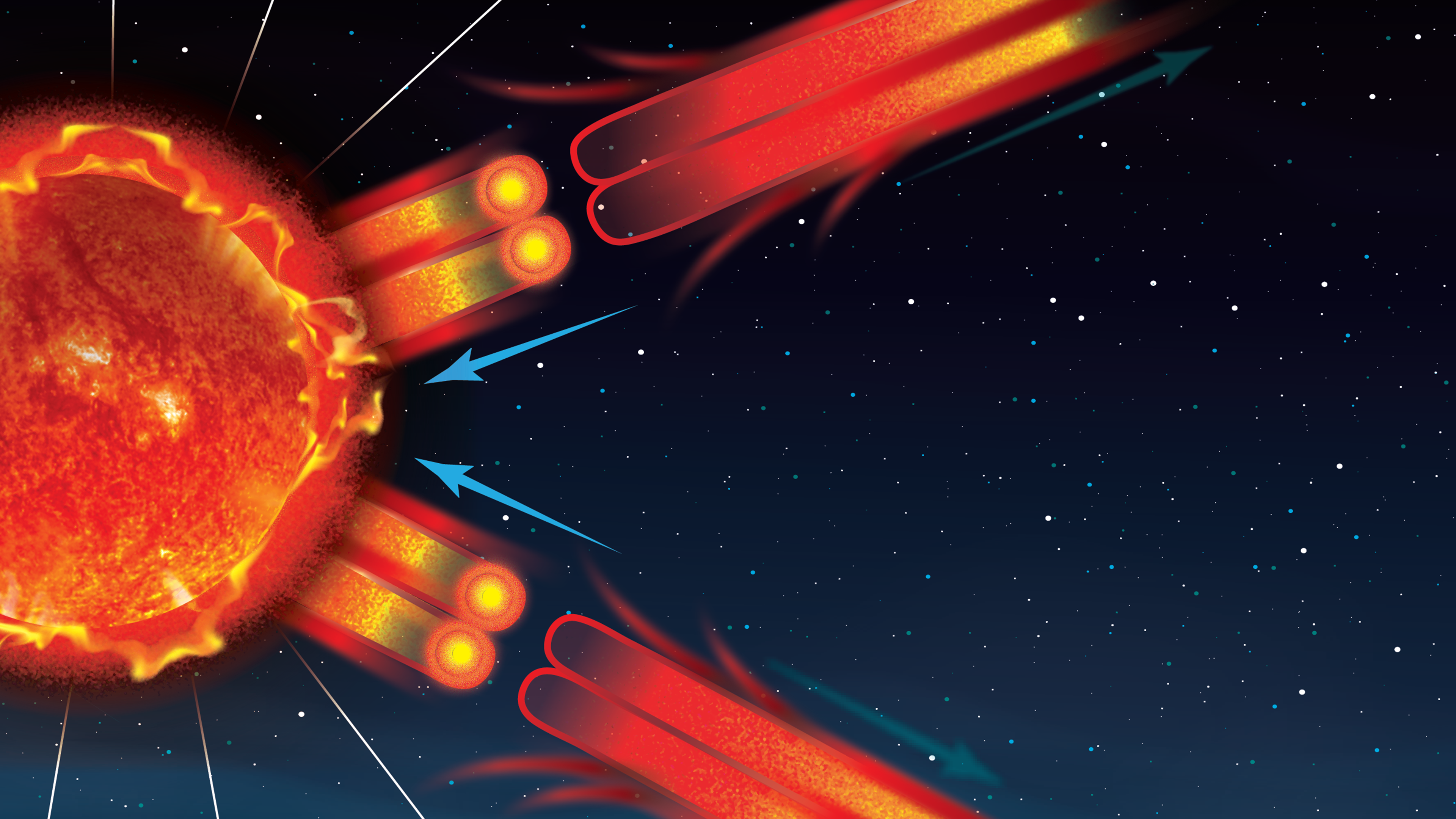Cassini Significant Events 05/07/08 - 05/13/08
May 15, 2008
(Source: Cassini Project)
The most recent spacecraft telemetry was acquired on Tuesday, May 13, from the Madrid, Spain, tracking complex. The Cassini spacecraft is in an excellent state of health and all subsystems are operating normally.
Information on the present position and speed of the Cassini spacecraft may be found on the "Present Position" page at: http://saturn.jpl.nasa.gov/operations/present-position.cfm.
Wednesday, May 7 (DOY 128)
Over two decades of scrutinizing Saturn are finally paying off, as scientists have discovered a wave pattern, or oscillation, in Saturn's atmosphere that is only visible from Earth every 15 years. The discovery is the result of a 22-year campaign observing Saturn from Earth - the longest study of temperature outside Earth ever recorded - and Cassini's observations of temperature changes in the planet's atmosphere over time.
The Cassini infrared results, which appear in the same issue of Nature as the data from the 22-year ground-based observing campaign, indicate that Saturn's wave pattern is similar to a pattern found in Earth's upper atmosphere. The earthly oscillation takes about two years. A similar pattern on Jupiter takes more than four Earth years. The new Saturn findings add a common link to the three planets. For more information, link to: http://saturn.jpl.nasa.gov/news/features/feature20080507.cfm
Thursday, May 8 (DOY 129):
Science activities today include the Ultraviolet Imaging Spectrograph (UVIS) performing repeated scans across the north polar region of Saturn to produce an auroral movie with the Visual and Infrared Mapping Spectrometer (VIMS) observing at the same time. UVIS also performed a stellar calibration, and the Composite Infrared Spectrometer (CIRS) continued with ring observations.
At the final Enceladus 4 / Enceladus 5 (E4/E5) discussion meeting, the project made the final decision to fly E4 as currently planned - at 50 km altitude under reaction wheel control (RWA). The E5 encounter will be flown at 25 km altitude under Reaction Control Subsystem (RCS) thruster control. The decision to use RCS for E5 was made because of uncertainties about whether the RWA control authority would be adequate in the plume environment. For exactly the same reason, close Titan encounters are always done on thrusters because of the atmospheric torque effects. An updated reference trajectory will be published by Navigation on Monday, May 19, in time for the S44 Science Operations Plan process Port 2 delivery on May 21.
Cassini Outreach has published some statistics for the Spring 2008 edition of Scientist for a Day.
Number of entries received: 197
Number of students who wrote or collaborated on essays: 289
Number of teachers involved: 69
Grades represented: full span of grades 5-12
Number of home schooled students: 9
Number of special education students: 5
Number of students who entered in Fall 2007 and again in Spring 2008: 7
Number of teachers whose students entered in Fall 2007 and again in Spring 2008: 9
Number of states involved: 24
Most popular target (choice of Rhea, Pan & Rings, or Enceladus): Enceladus by far!
The final determination of the winning essay will be made in June.
Friday, May 9 (DOY 130):
A non-targeted flyby of Methone occurred today, and one of Janus is scheduled for Saturday, May 10.
Real time commands were uplinked to the spacecraft yesterday in support of a Radio and Plasma Wave Science (RPWS) Whistler observation. The wheels were quiet, and the spacecraft operated under thruster control for the duration of the observation. Although the sequence worked correctly, at this time it is believed that no whistlers were detected.
The Radio Science (RSS) Orbit 67 rings chord occultation was completed on Friday, May 9. The experiment was supported by DSS-14 with S- and X-band support, and DSS-25 and DSS-26 with X- and Ka-band support. The experiment executed nominally and very good X- and S-band data sets were acquired. The observation probed all major ring features including the A ring, the Cassini Division, the B ring, and the C ring on both the inbound and outbound sides. The ring-opening angle was 9.9 degrees. The occultation completed a set of chord occultations that sampled the rings when they were moderately closed with an opening angle ranging from about 7 to 10 degrees. Together with earlier occultations, this observation provides valuable information regarding radial and vertical ring structure and other physical properties of the rings.
This was the last RSS rings occultation in the Cassini prime mission. Only four Saturn atmospheric occultations remain. The occultation experiments continue in the extended mission starting with a rings occultation in August in S42.
Monday, May 12 (DOY 133):
On Monday, May 12, Cassini flew by Titan at an altitude of 1,000 km, and a speed of 6.3 km/sec. This was the first of two Titan northern hemisphere flybys that will wrap up the prime mission. On this flyby, RADAR mapped the bright region of Xanadu, which was only partly imaged during the T13 flyby. The overlap in coverage may yield stereo views of the region. The RADAR team targeted Hotei Arcus, as well as a possible cryovolcanic feature, Tortola Facula - informally known as the 'Snail' -, which was previously seen in infrared images.
The third and final delivery for the S43 Science Operations Plan process occurred today. The files are being merged and reports will be sent out on Wednesday, May 14. This process concludes with a handoff to the final sequence development process on May 23.
Tuesday, May 13 (DOY 134):
After polling the affected teams, the sequence leads for S40 - currently executing on board the spacecraft - have determined that there is a "GO" for both the RSS Live Movable Block for a Saturn Occultation, and the DOY-138 Tethys and Janus Live Inertial Vector Propagator update. Files in support of these two activities will be uplinked on May 15, and will execute on May 17.
A presentation was given today at the Mission Planning Forum on how Navigation could further contribute to Titan atmospheric density analysis via a dedicated Titan flyby on Earth-line. If this were to occur, it could not be scheduled until sometime during a post Extended Mission phase. Candidate post Extended Mission activities, final spacecraft disposition, and other related topics will be receiving serious attention at the next Project Science Group meeting in June of this year.
An image of Rhea's ancient craters is Astronomy Picture of the Day today. It can be seen at: http://antwrp.gsfc.nasa.gov/apod/ap080513.html































